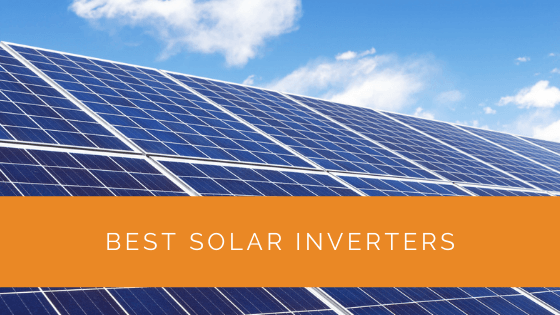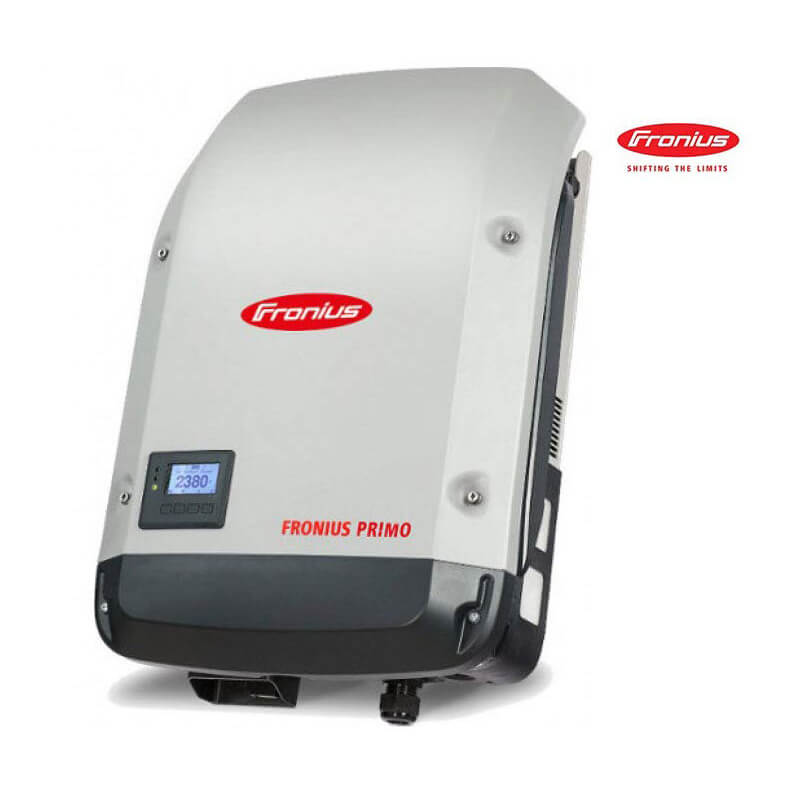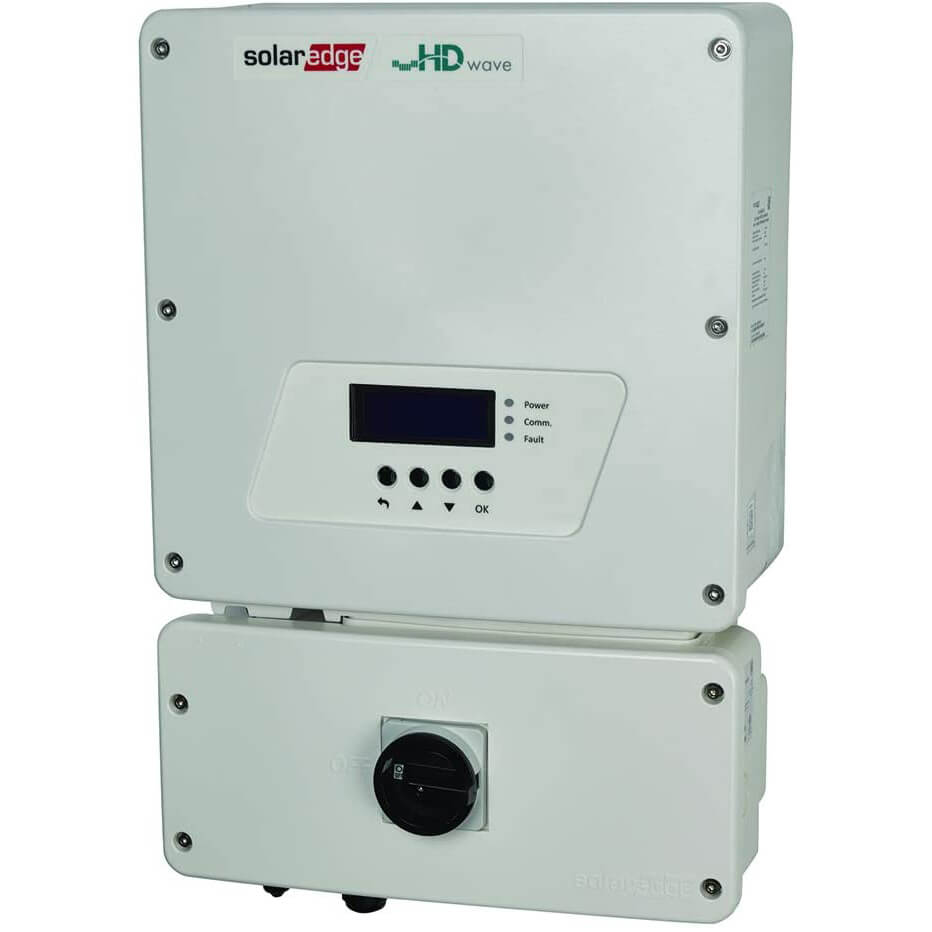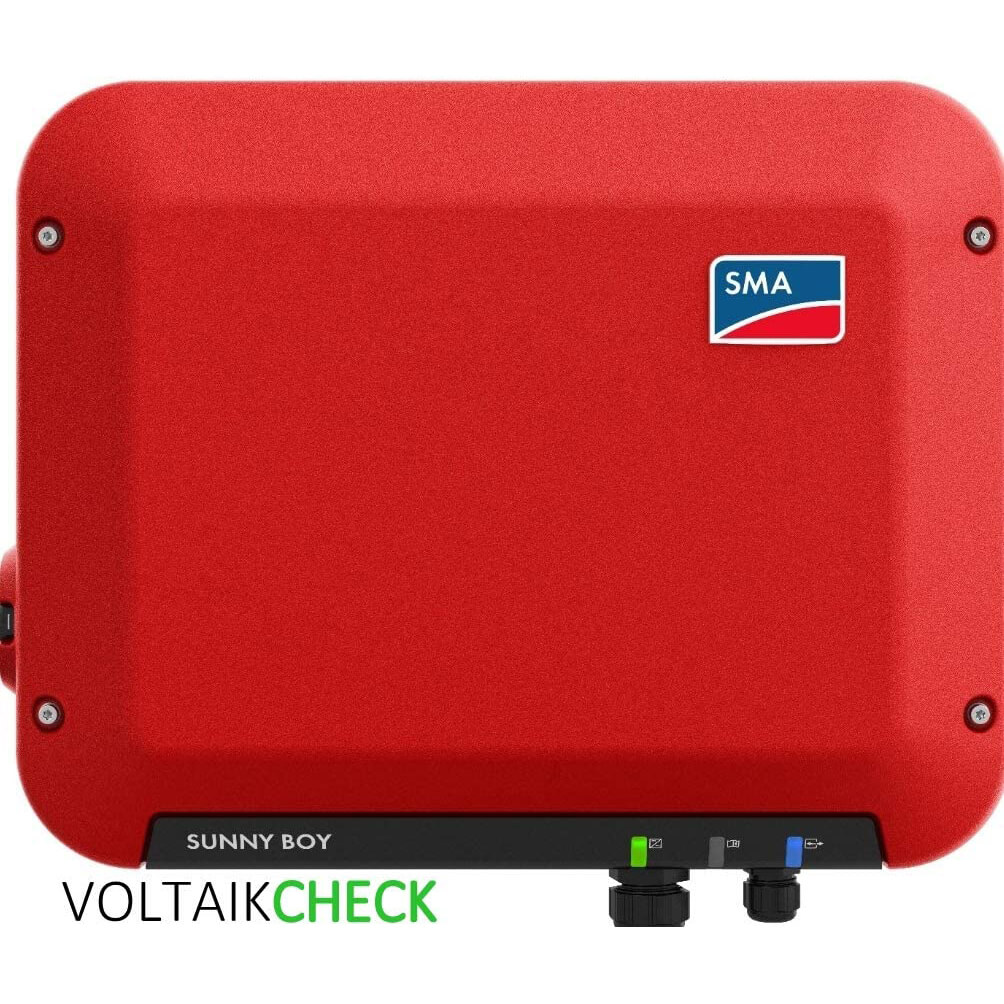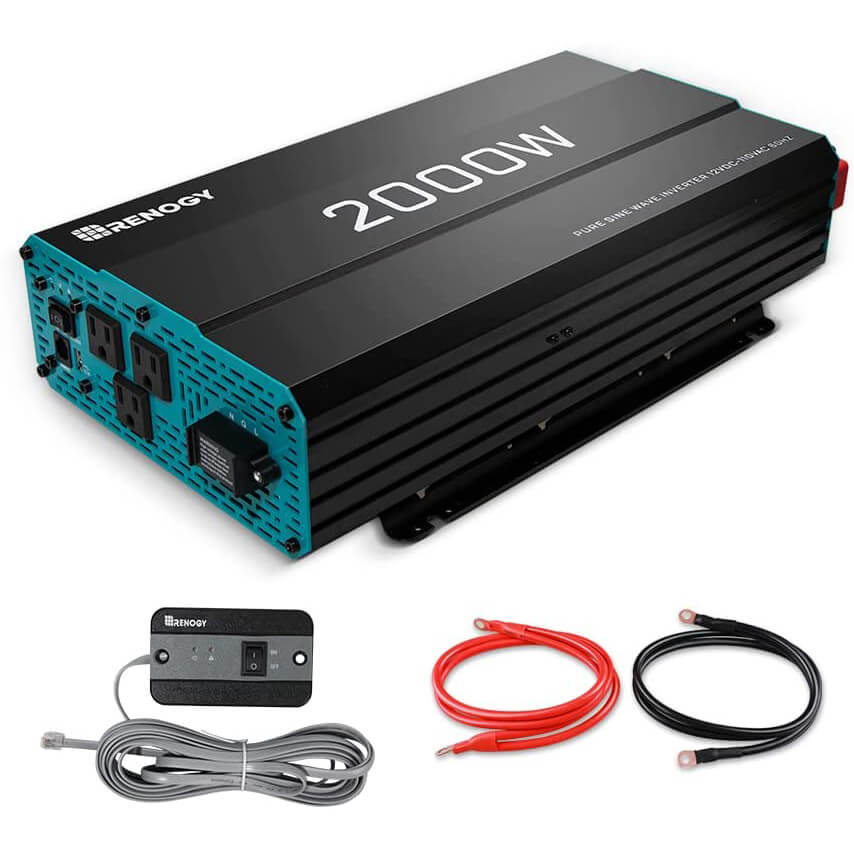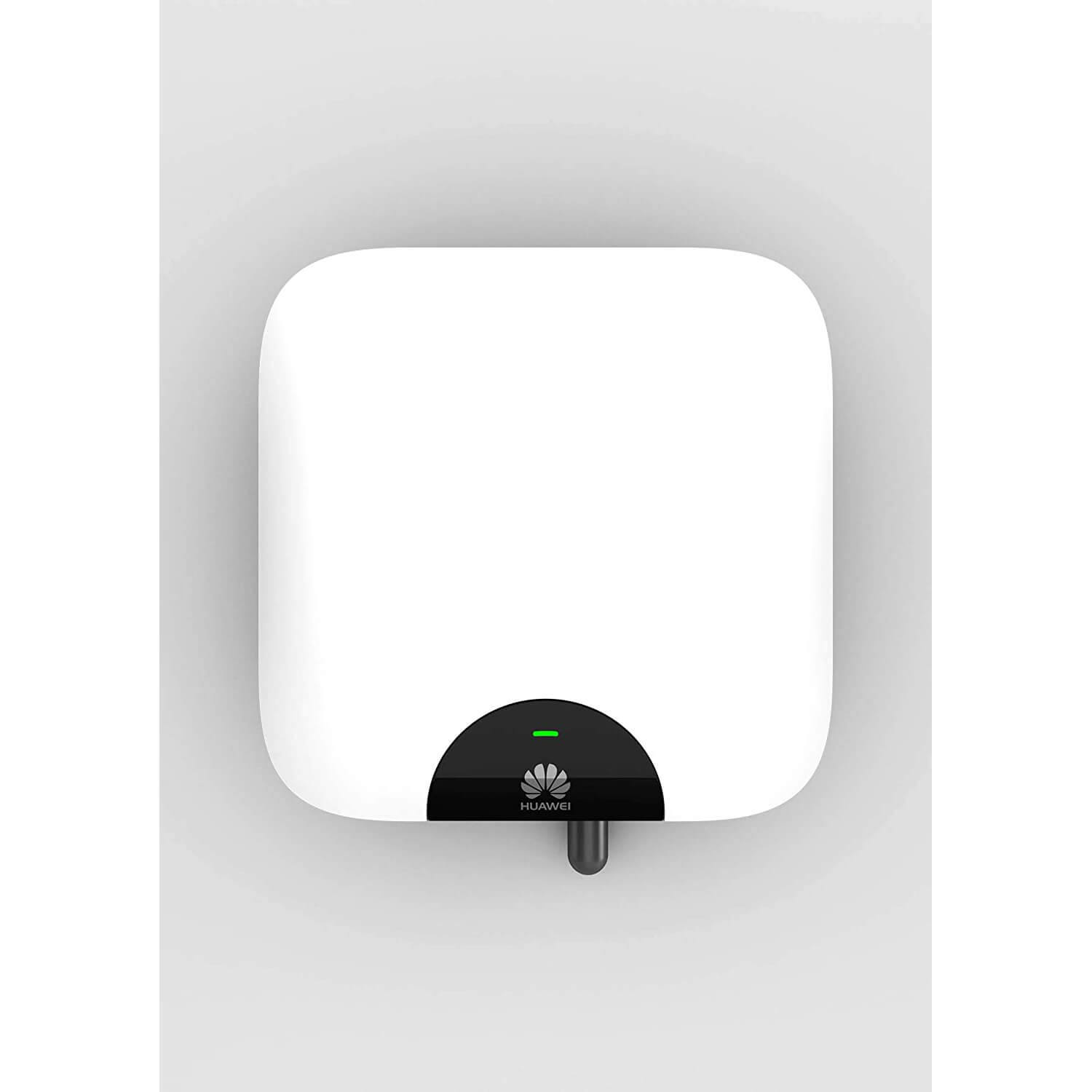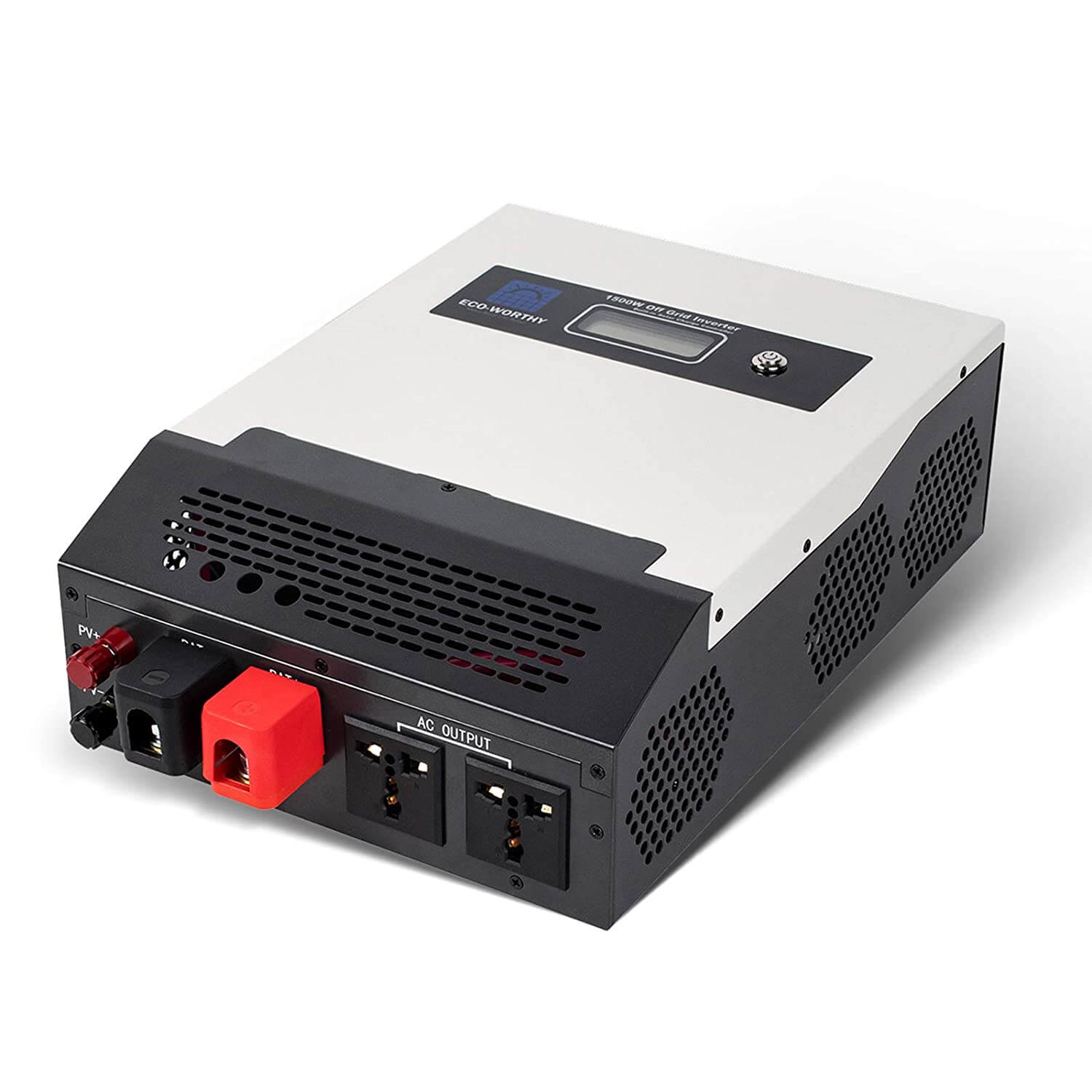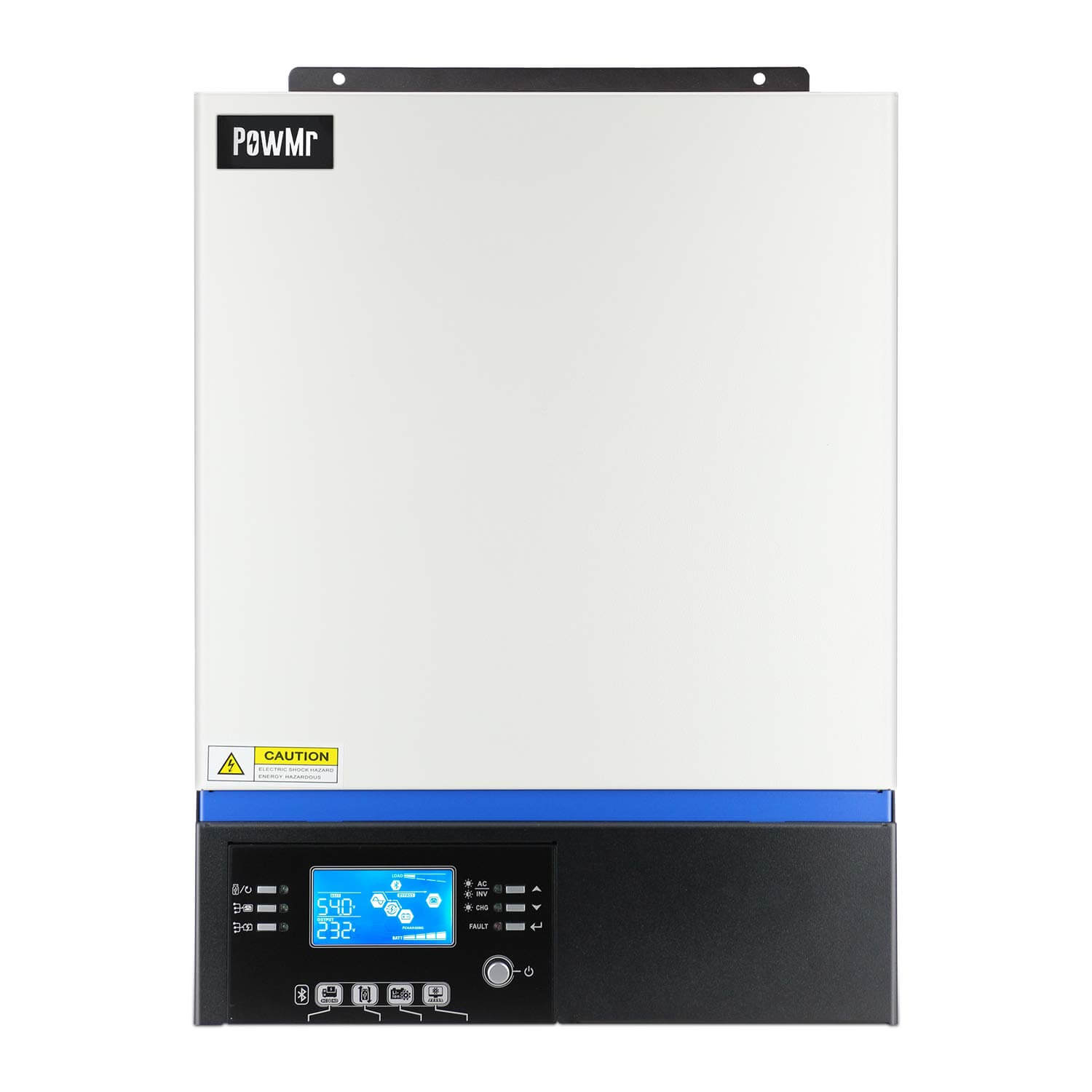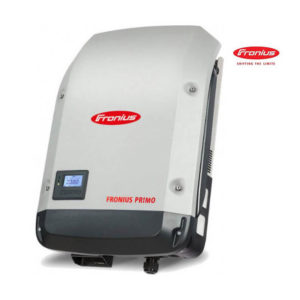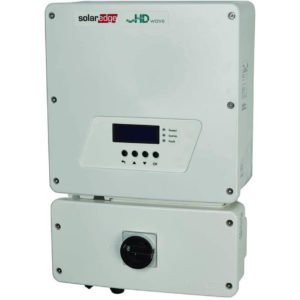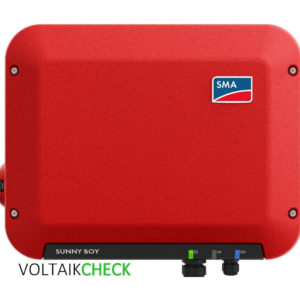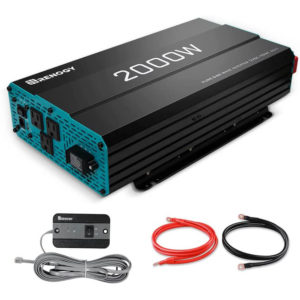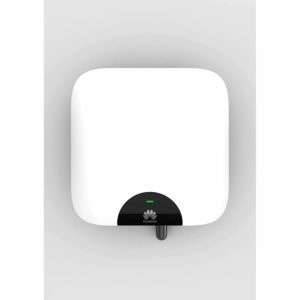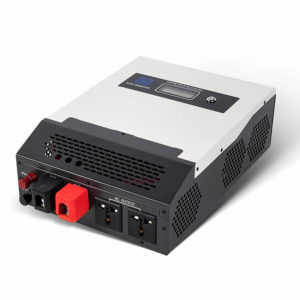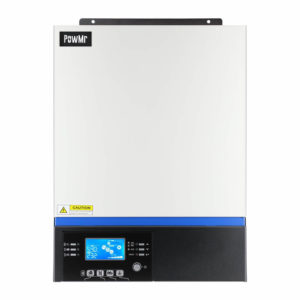Solar energy has become an increasingly popular and sustainable choice for homeowners and businesses looking to harness the sun’s power. At the heart of any solar power system lies the crucial component known as a solar inverter. In this comprehensive article, we delve into the world of solar inverters to provide valuable insights, reviews, and a helpful buying guide to assist you in making an informed choice for your solar energy needs.
Solar inverters play a pivotal role in converting the direct current (DC) electricity generated by solar panels into the alternating current (AC) electricity that powers our homes and businesses. With many options available in the market today, it can be challenging to determine which solar inverter best fits your unique requirements. This article aims to simplify this process by highlighting the top-performing solar inverters, offering detailed reviews of their features and performance, and guiding you through key considerations to remember when purchasing. Whether you’re a seasoned solar enthusiast or new to solar energy, our guide will empower you to make a confident and informed decision for a greener and more sustainable future.
Read on for our expert reviews of the best solar inverters available. Check the latest prices to ensure you get a great deal!
Contents
- 1 Our Top Picks
- 2 7 Best Solar Inverters
- 3 Solar Inverter Buying Guide
- 4 Case Study: Enhancing Residential Energy Efficiency with Solar Inverters
- 5 Expert Insights From Our Solar Panel Installers About Solar Inverters
Our Top Picks
Image | Name | |
|---|---|---|
Fronius First Solar Inverter | ||
SolarEdge Inverters | ||
SMA Sunny Boy 1.5 / 2.0 / 2.5 Inverter | ||
Renogy Pure Sine Wave off GRID Solar Inverter | ||
Huawei Hybrid Inverter SUN2000L | ||
ECO-WORTHY 1500 W Solar Charge Inverter | ||
PowMr 3000W Solar Hybrid Inverter |
7 Best Solar Inverters
1. Fronius First Solar Inverter
Offering unrestricted indoor and outdoor use, the Fronius First Solar Inverter is a transformerless inverter operating at 5300 watts. It accepts a maximum DC output of 1000 volts, ideal for residential installations. Dimensions of this solar inverter are 64.5 x 20.4 x 43.1 cm.
Features
SnapINverter Mounting System
It can be a hassle removing and resetting parts of the inverter every time it goes under maintenance. But with the Fronius Solar Inverter, you get a dynamic mounting system.
Here, the connection and power stage set compartments are fitted individually. As a result, there is no need to remove the inverter or its cables and configurations.
Dynamic Peak Manager
This new MPP tracking algorithm helps adjust as per the optimal operating point. Due to this, the inverter can search through the characteristic curve and reach the GMPP (Global Maximum Power Point) in less shade.
Additionally, Fronius has integrated the WLAN interface in the inverter. It helps the user check the solar system’s performance on their phone.
Smart Grid Ready
These inverters are compatible with the concept of future Smart Grids. It is possible because of the advanced grid smart functions present in the system.
Such functions can handle high-density PV system density and prevent any energy losses. Therefore, the yield of Fronius systems is always guaranteed.
SuperFlex Design
Here, all design requirements are present in a single inverter. This product has two MPP trackers and high system voltage and wide input voltage to ensure compatibility.
The inverter design is ideal for residential purposes and can be actively used in different roof orientations.
Pros:
- Designed for residential setups
- Includes WLAN interface to help with system monitoring and data logging
- These inverters operate at 5300 watts
- Separate installation for inverter and power stage set
Cons:
- At 47.4 lbs, it weighs more than usual solar inverters
2. SolarEdge Inverters
With an aim to provide solar energy devices that increase energy output through module-level MPPT, SolarEdge was founded in 2006. The Israeli company offers solar inverters that yield high energy output and a standard warranty of 12 years. You can also extend the warranty to 25 years.
Features
Flexible Designs
This single-phase solar inverter is fitted with a data monitoring receiver. It helps aggregate the power optimising capability of individual modules.
Individual panel optimisation helps deal with persisting shading issues or the tricky roof terrain. The number of panels can vary as per the user’s needs.
Higher Energy Output
As each panel works independently, the final energy output is also increased. Unlike a string system, where a single panel can bring down the entire series, this inverter keeps on working even if any panel faces technical issues.
Maximised Savings
These inverters work on power conversion architecture, efficiently harvest solar power, and provide maximum reliability. Integrated with a built-in DC switch, this inverter is lightweight and conveniently put up.
Over 20-25 years, SolarEdge inverters are bound to save you a substantial amount of money compared to regular inverters.
Data Monitoring Receiver
This inverter helps transmit the data to the SolarEdge portal with a data monitoring receiver.
It helps the customer access the website and check any necessary information regarding the solar inverter.
Pros:
- It allows complete visibility of energy consumption, production, and usage
- Individual panel optimisers allow more flexible system designs and solutions to shading problems
- Lightweight inverter for easy installation
Cons:
- It is not beneficial for people looking for fast ROI
- It is costlier compared to other options in the market
3. SMA Sunny Boy 1.5 / 2.0 / 2.5 Inverter
SMA Sunny Boy inverter is easily integrated into the home network and provides easy installation options. If you want to avail the maximum benefits of a small PV system, a Sunny Boy inverter will be an ideal option to choose. It provides a maximum efficiency of 97%. It also has a wide input voltage range of 80 to 600 V.
Features
Easy installation
The solar inverter is very lightweight and weighs nearly 9 kgs. The compact size makes it simpler to install anywhere with just two screws. There is no need for any additional wall mounting bracket for hanging it. The integrated user interface lets you adjust the settings without opening the flap.
Intuitive User Interface (Web UI)
SMA Sunny Boy series offers a smart user interface that lets you monitor the data from any digital device like PC, mobile, tablet, etc. You can choose from local or online monitoring options based on the given options like Sunny Places and Sunny Portal. The inverter readily connects to Ethernet or WLAN.
SMA Smart Connected
SMA provides automatic system monitoring free of cost. It helps in ensuring quick and targeted service for the PV system. SMA Smart Connected will automatically inform both the system owner and the installer if the inverter breaks down.
It reduces additional diagnostic time and helps fasten up the repair process. SMA offers device replacement with no additional costs in case of complete failure.
Pros:
- Lightweight and compact inverters can be easily installed anywhere
- SMA provides a 5-year warranty that can be extended to 10 or 15 years
- Available in bright red colour that is more appealing than the dull tones
- It has a dynamic feed-in control option
Cons:
- It needs Wi-Fi or Bluetooth connection for setup
4. Renogy Pure Sine Wave off GRID Solar Inverter
If you search for a residential-use solar inverter with a 2000 watts capacity, choose this pure sine wave battery converter by Renogy. This setup is also ideal for people looking to go off-grid and charge their 12V input daily appliances.
Features
High-Quality Waveform
Power difference can cause your primary grid’s switch to trip and short circuit some of your appliances along the way. Renogy has provided a high-quality waveform in this solar inverter to avoid this.
It produces a constant and smooth AC output that is much smoother and cleaner than the mixed sine wave inverters.
Special LED Indicators
Sometimes your inverter can face under or overvoltage surges, heating, short circuit, etc. This solar inverter comes with LED indicators to alert the user about any such circumstances.
Such alerts will help you take the right action right away. Additionally, these inverters also come with high-speed ventilation fans.
Built-in Protection
Output AC ports for these inverters are adjusted to comply with all 12 VDC systems. Here, you can include motor pumps, a laptop/phone charger, or even refrigerators.
With a maximum power capacity of 2000 watts, this system can be efficiently used for temporary cabins or going off-grid.
Easy Installation
This solar inverter comes with a 19.8 feet remote controller and battery cables of size 4 AWG 3 feet included in the kit. As per the manual’s detailed instructions, these wires can be used to install the inverter system.
Additionally, with dimensions of 45.2 x 21.8 x 10.2 centimetres, this inverter weighs only 11.7 pounds. It can be installed single-handedly.
Pros:
- Protection against overload, over-temperature, and short circuit
- ETL Certified and self-reliable
- Lightweight and easy to install
- LED indicators for quick damage control
Cons:
- 1-year warranty is relatively less as compared to competitor products
5. Huawei Hybrid Inverter SUN2000L
Attractively designed and extremely lightweight, this smart energy centre improves the system’s self-consumption. This product is ideal for residential and commercial purposes due to its compatibility with inverters, optimisers, battery plugs, etc.
Features
Innovative Design
Unlike the conventional inverters with big boxes, this product is compactly designed and gives a sleek, modem-like look. Additionally, it works well with LG Lithium-Ion Batteries.
Also, this solar inverter is integrated with power optimisers to ensure maximum electricity generation from less than ideal conditions. As a result, your solar panels provide increased efficiency in shaded areas.
Easy Installation
With a total weight of 10 kgs, this solar inverter is easy to handle and instantly set up. You also get optimised AC connectors that allow seamless wiring and adapt to the inverter’s configuration in the kit.
Natural Cooling
Usually, inverters are fitted with very noisy fans for the cooling process. Such devices can seem inappropriate for commercial spaces.
To deal with this issue, Huawei has brought in a natural cooling system that eliminates the need for fans. It also adds an IP65 protection layer and lowers the corrosion risk over time.
Safety Box
Integration of the safety box in the inverter helps check its performance on a single-panel basis. Connecting the system to your phone, you can also remotely monitor the total power production and efficiency rate.
Pros:
- Standard 5 year warranty that can be extended to 10 years
- Optimisers help improve self-consumption of the inverter
- Extremely lightweight and easy to install
- Lets the user monitor performance based on single panels
Cons:
- The user manual specifies that the inverter cannot be installed in salty areas, i.e., 500m from any coastline
6. ECO-WORTHY 1500 W Solar Charge Inverter
When it comes to solar panels and other related products, ECO-WORTHY is a well-known name. This is another all-in-one solar inverter you might want to invest in. It comes with a 50A inbuilt charge controller to match the battery power specifications.
Features
Pure Sine Wave Inverter
Generally, people notice a lot of glitches, voltage ups and downs, and noisy disturbances from their electrical home appliances. It happens because of the uneven power supply.
With ECO-WORTHY, you get an inverter that accepts 24V input and produces a maximum of 1500 watts in the pure sine wave. Additionally, you can use it for lead or Lithium batteries in RVs or cabin homes.
Easy Wiring Process
Tired of the tangled wires and complicated installation processes? Here, you get a step-by-step guide for connecting your battery, solar panels, and inverter.
After connecting the wires, you need to switch on the main button. Within 10 seconds, the machine will be up and running.
Constant Monitoring
You can quickly check the system’s battery capacity or input/ output voltage through the screen display.
The inverter is also fitted with intelligent detection to prevent under/ overload or short circuits.
Usage Recommendation
This inverter is compatible with a wide range of solar panels with different energy capacities. You can choose from 480W, 720W, 960W panels with a 24V connection based on your electricity requirements.
Pros:
- The company provides 24*7 customer service
- Pure sine wave DC output for smooth operations
- Real-time monitoring with smart display
- Comes with a 50A charge controller
Cons:
- 1-year warranty could be increased
- Very expensive
7. PowMr 3000W Solar Hybrid Inverter
If you are looking for a multi-purpose inverter with seamless power support, PowMr is a good option. This inverter acts as a solar and battery charger simultaneously to provide maximum efficiency.
Features
LCD Display
Knowing the input/output voltage and total power production is essential to ensure that the inverter is working smoothly.
With PowMR, you get a comprehensive LCD display that can help check the battery charging current and tell you the acceptable value side by side.
Battery Equalisation
Over time, batteries can accumulate sulfate crystals on the plates. To remove that, an equalisation function has been added.
When the plates are clean, more surface area can interact with the electrolyte, thus increasing the battery’s life and performance.
Optimum Performance
This solar inverter is compatible with generator systems and national grids alike with the battery charger function. Additionally, you also get to alter the position of the LCD control module at your convenience.
Battery Support
This inverter can work with 24V acid lead and Lithium batteries. Additionally, the inverter can also operate sans battery. The display screen likely shows some error, but the working process of the inverter continues normally.
Pros:
- It can be connected with Bluetooth to access the inverter control via phone
- Provides multiple functions in one inverter
- Fitted with numerous communication ports
Cons:
- Only compatible with Android devices
Solar Inverter Buying Guide
Most people are making the switch to solar appliances to save energy and eliminate the hassle of power outages. However, picking a suitable inverter for your home or office could still be a tough decision.
Here’s a complete Solar Inverter buying guide for you to consider before making the right choice.
Key Takeaways
- A solar inverter is an essential component of a solar energy system that converts DC power generated by solar panels into AC power for household appliances.
- Solar inverters come in different types, including string inverters, central inverters, micro-inverters, stand-alone inverters, grid-tie inverters, and backup battery inverters, each with its advantages and disadvantages.
- Before buying a solar inverter, consider safety certification, durability, battery capacity, budget constraints, weather-proofing, and peak power to ensure you choose the right one.
What is a Solar Inverter?
A solar inverter is an electric device that uses photovoltaic solar panels to convert the direct current generated into alternating current with the frequency used to run home appliances. Usually, an inverter consists of four components:
- Solar Panel
- Charge Controller
- Battery
- Inverter
How Does a Solar Inverter Work?
In a photovoltaic cell, a layer of positive or negative layers is combined with a junction. These layers absorb sunlight and then pass it to the photovoltaic cell made of semiconductor layers of crystalline silicon. As the energy runs around, electrons jump between positive and negative layers producing a direct current.
This direct current is then passed on to the inverter with large capacitors that convert it into alternating current.
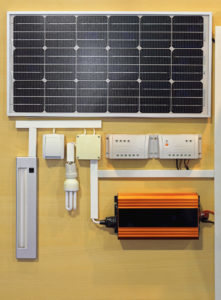
How Long Do Solar Inverters Last?
How long a solar inverter lasts can depend on the kind of inverter you have, but in general, solar inverters typically have a lifespan of around 5-12 years.
Different Types of Solar Inverter Available
You will find various types of solar inverters readily available in the market. Here are two categories based on which the devices have been classified.
Working
- String Inverters
- Central Inverters
- Micro-Inverters
Interaction With Grid Power
- Stand-alone inverters
- Grid-Tie inverters
- Backup Battery inverters
String Inverters
In such inverters, a string or a row of solar panels are connected. For example – if there are 16 panels on your roof with 4 panels in each row, you have 4 solar strings. All these panels are connected in a series connection that is further connected to the inverter.
String inverters are primarily found in residential buildings with one string only. These inverters are convenient to install and cost less than other types. Usually, the strings of solar panels are in an easy-to-access location that simplifies the maintenance and repair work procedure.
However, if a single panel stops working, the overall performance of the inverter is heavily affected. Therefore, such inverters should be installed if the roof gets consistent sun.
Central Inverters
Central inverters are a form of larger string inverters where multiple strings are in use. Instead of connecting the output directly to the inverter, a container box is used in the case of central inverters.
Such inverters are helpful in the case of large setups, like that of 5 MW. Like string inverters, central inverters are also affected by shading and can lose up to 50% energy with even 10% coverage. However, these inverters are cheaper as compared to string inverters.
Micro-Inverters
In the case of micro-inverters, there is a small inverter connected behind each solar panel. It converts the direct current received into alternating current. The AC supply is then merged and passed on to the power grid.
These inverters promise 25% more output than string or central inverters. Here, each panel’s energy is initially stored separately. It means that in the case of shading, the exposed panels are still performing their best.
However, these inverters are costlier than other options, and it is tough to maintain them.
Stand Alone Inverters
These inverters use rechargeable batteries to draw DC power and convert it into AC power. The battery is connected to solar panels and utilises DC power generated by those panels to remain charged.
As the name suggests, stand-alone inverters are helpful if someone wants to go completely off-grid or in rural areas with no electricity connectivity.
Grid-Tie Inverters
These inverters are connected to a local grid and send the generated power back to the grid. Here, the DC power generated is sent to the grid-tie inverter. This inverter further converts it into AC power and sends it to the local grid.
Such inverters have anti-island protection and shut down during power outages to protect the repairman working on the grid.
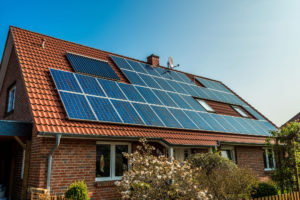
Backup Battery Inverters
Here, the solar panels produce DC power sent to the battery to get stored. Then, the battery power is transferred to the inverter for DC to AC power conversion. In case the battery is fully charged, the produced power is sent to the local grid.
These inverters are costly but adequate if you are likely to suffer from regular power outages.
Factors to Consider Before Buying Solar Inverters
If you are heading out to take the right step and purchase a solar inverter, here are a few points you should definitely consider.
Safety Certification Certificate
Like any other electronic device, it is equally important to check the safety certification of any solar inverter. A good choice will be to see if it has any independent testing laboratory marking.
Check for Durability
Solar inverters are long-time investments. To ensure that you are making the right choice, check the product’s durability and performance record under extreme weather conditions. Based on different geographical terrains, you will find that different inverters give different efficiency.
Choose the Battery Wisely
The life of any solar inverter is primarily dependent on its battery. Therefore, it is crucial that you check the battery capacity properly before making the purchase. Battery capacity is the number of hours your inverter can power the devices.
Budget Constraints
You can select the ideal solar inverter based on your daily power requirement and budget. A string inverter is a good idea if you are looking for an inverter in a residential setup. These inverters are considerably cheaper and work well in uncomplicated roof regions.
Weather-proof
Based on where you want to install the solar inverter, it is essential to check if the panels are weather-proof or not. In case not, you might want to invest in a weather-proof cage for protection. It will ensure that your solar panels last longer.
Peak Power
Certain home appliances require higher power to start than they do to operate. In such cases, it is essential to note peak power, i.e., the highest power a solar inverter will supply for a short duration.
Case Study: Enhancing Residential Energy Efficiency with Solar Inverters
Background
At Solar Panels Network, we are committed to providing sustainable energy solutions tailored to the needs of our clients. This case study highlights our work with a residential client who sought to improve their home’s energy efficiency and reduce reliance on the grid through a robust solar inverter system. The project aimed to optimise the use of solar energy while ensuring the system’s reliability and efficiency.
Project Overview
The client required a comprehensive solar inverter system capable of converting solar energy into AC power for household use. Key objectives included handling peak power demands, ensuring durability against weather variations, and providing seamless integration with existing solar panels.
Implementation
- Assessment of Energy Needs: We conducted an in-depth analysis of the client’s energy consumption patterns, focusing on high-demand appliances such as HVAC systems, refrigerators, and lighting. This analysis was crucial for determining the appropriate inverter capacity.
- Inverter Selection: Based on the assessment, we recommended a hybrid grid-tie inverter with backup battery support. This type of inverter not only converts DC to AC power but also provides the flexibility to store excess energy in batteries or feed it back to the grid.
- Installation Process: The inverter and battery systems were installed in a weather-protected area of the client’s property, ensuring durability and long-term performance. We used high-quality materials and components to secure the installation, including weather-proof housing for the inverter.
- System Integration and Testing: We integrated the inverter with the existing solar panel array and tested the system under various load conditions. This included simulating peak demand scenarios to ensure the system could handle sudden surges in power usage.
Results
- Enhanced Energy Efficiency: The solar inverter system provided a consistent supply of AC power, significantly reducing the client’s reliance on grid electricity. The system’s ability to store excess energy in batteries also helped in managing energy use during peak times.
- Cost Savings: By utilising solar energy more effectively, the client saw a noticeable reduction in their monthly electricity bills. The ability to store and use energy during peak rate periods provided additional cost savings.
- Improved Reliability: The hybrid inverter system ensured a continuous power supply during outages, automatically switching to battery power when grid power was unavailable. This feature was particularly beneficial during recent power interruptions due to local infrastructure issues.
Summary
This case study demonstrates the critical role of solar inverters in enhancing the efficiency and reliability of residential solar energy systems. By carefully selecting and installing the right inverter, we provided the client with a sustainable and cost-effective energy solution. Solar Panels Network remains dedicated to delivering high-quality solar energy solutions, ensuring our clients can enjoy the benefits of renewable energy with confidence. Our expertise in solar technology, combined with a commitment to customer satisfaction, positions us as a leader in the field, ready to support the transition to a more sustainable energy future.
Expert Insights From Our Solar Panel Installers About Solar Inverters
Solar inverters are the heart of any solar energy system, converting the DC power from solar panels into usable AC power. The right inverter can significantly enhance the efficiency and reliability of your solar setup.
Senior Solar Technician
When selecting a solar inverter, it’s crucial to consider factors like battery capacity, peak power, and the inverter’s compatibility with your solar panel setup. These elements ensure that your system can handle both normal and peak energy demands efficiently.
Renewable Energy Consultant
Durability and safety certifications are key when choosing a solar inverter. Ensure that your inverter can withstand local weather conditions and has the necessary certifications for safe and long-term operation.
Outdoor Solar Specialist
Our Expertise in Solar Products
At Solar Panels Network, our pride lies in the extensive expertise of our seasoned professionals and renewable energy experts. With the rising demand for eco-friendly and energy-efficient solutions, we are dedicated to guiding you through the options. By merging our vast knowledge with practical, real-world testing, we deliver trustworthy reviews.
Why Trust Our Reviews?
- Industry Expertise: Our experts have a deep-seated understanding of the solar industry, including solar inverters. We stay updated with technological advancements to ensure our reviews reflect the cutting-edge options.
- Hands-On Testing: True to our commitment to authenticity, each solar inverter on our list has been tested for performance and durability. We’ve assessed these inverters in various settings to simulate their performance in your solar energy system.
- Transparency: We approach our reviews with a clear and open methodology. Every recommendation is presented with an honest assessment of its features and functionality. We aim to provide you with all the necessary information, free from any external influence so that you can make the best choice.
- Experience: Our team’s collective experience is invaluable in discerning the quality of solar inverters. We’ve seen trends come and go and understand what features offer genuine long-term value. This experience is integral to our review process, providing you with recommendations that are not just based on technical specifications but also real usability and satisfaction.
As we seek a more sustainable future, we are dedicated to helping you find the best solar inverters for your 2025 solar energy projects. Our selection is designed to offer you a combination of innovation, reliability, and efficiency, perfect for the environmentally-conscious homeowner. With our expert advice, you can harness the power of solar energy with confidence.
The Bottom Line
Solar energy is paving the way for a sustainable future. Not only is it environment friendly, but also cheaper, safer, and easier to maintain in the long run.
Many people are already making the switch and using solar inverters for their residential or commercial electricity supply. A solar inverter takes DC power generated by solar modules as an input. It then converts DC into AC at a specific frequency that helps run the home appliances.
There are various types of solar inverters available in the market, and selecting the right one can be a bit confusing. In that case, go through the buying guide and focus on the features best suitable for you.
About the Author
Solar Panels Network stands at the forefront of solar energy solutions, driven by a team of seasoned solar engineers and energy consultants. With over decades of experience in delivering high-quality solar installations and maintenance, we are committed to promoting sustainable energy through customer-centric, tailored solutions. Our articles reflect this commitment, crafted collaboratively by experts to provide accurate, up-to-date insights into solar technology, ensuring our readers are well-informed and empowered in their solar energy decisions.

